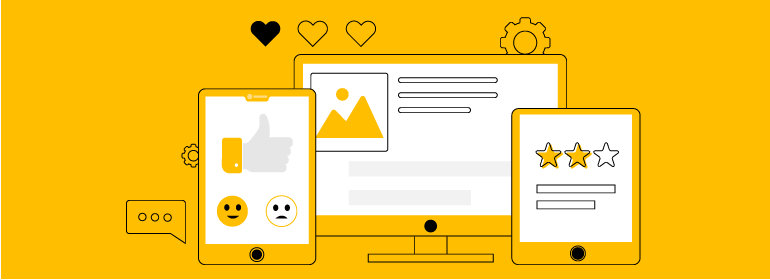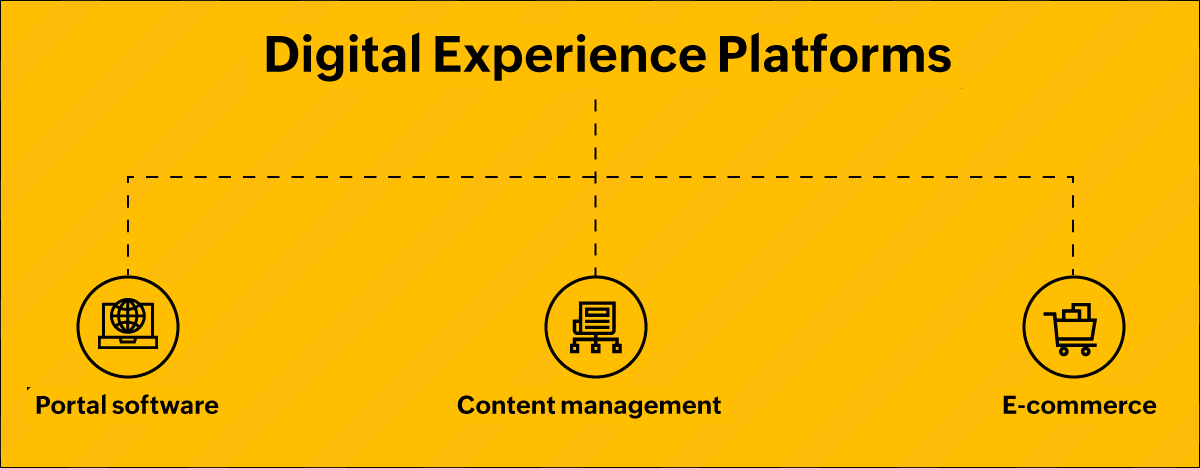Digital experience and digital experience platforms, defined

Usually, people want a seamless experience when they interact with any organization. Whether a B2B or B2C interaction, the expectation is the same.
In our world today, it's nearly impossible to interact with an organization without using technology. When a person interacts with an organization via a digital medium, it can be termed digital experience. In this post, we'll be learning about what digital experience is and digital experience platforms, including some best practices and pitfalls of implementing them.
What is digital experience?
Digital experience can be defined as a customer's perception of their interaction with an organization via a digital channel. This digital channel could be a website or a mobile application.
An organization may have multiple digital channels through which customers can connect with them. As a result, digital experience, or DX, comprises several tools and platforms. It goes beyond a digital content management tool like a CMS.
A good experience may keep customers coming back to an organization. And digital technologies, when used properly, can aid businesses in delivering better experiences to their customers. Take, for example, having an email newsletter opt-in form on a company's website that is smart. By smart, we mean something like this: say, for instance, the form is able to remember if the user has already opted in and won't show the same user the form each time they visit the site.
From the side of a business owner, the digital medium can be used to sell more products and services to an existing customer. For example, an e-commerce platform for sales of smartphones may recommend accidental damage insurance to a user after they purchase a device.
Let's now look at some of the benefits that a good DX brings.
Importance of digital experience
Digital experience is part of the customer experience. In today's world, almost everyone depends on some form of digital technology like a smartphone. Hence, businesses must strive to deliver a good experience to customers and potential customers on digital channels.
In this section, we'll identify the importance of digital experience.
Increase in profitability
Digital channels can cut the cost of running a business, hence increasing profitability.
"If a company can reduce costs by optimizing the supply chain, manufacturing operations, personnel, and facilities without having an impact on quality, sales price, or sales volume, that provides a path to higher profitability," according to the Michigan Manufacturing Technology Center.
The use of digital technology can help businesses optimize many processes while improving the experience they deliver. For example, a web-based payment system makes it easier for businesses to receive and send payments online.
Impact on revenue
In addition to our first point, the use of digital technologies can increase the revenue of an organization. For example, selling on the internet via an e-commerce platform may enable a business to reach new customers, hence increasing revenue.
Digital technology can also lead to the birth of new products and services. For example, new technologies provide opportunities for the creation of new software-as-a-service (SaaS) solutions.
Customer retention
Digital experience can make or break your business. Internet users dread slow websites. Also, most people will leave your website for a competitor's if it takes too long to load. Therefore, it's not only important to have a website, but having a good website will enable you to reach more people and keep them.
The same is true across all other digital channels. For instance, buggy mobile applications will experience more uninstalls.
Another way digital experience can help you keep customers is through capturing data on how people interact with your organization. You can use this data to improve the experience where necessary.
In order to deliver a good digital experience, an organization needs to set up a user-friendly digital experience platform.
What is a digital experience platform (DXP)?
A good digital experience platform is an integration of many tools that enable an organization to deliver a better experience across multiple digital channels. It gives a 360-degree view of the customer.
An organization can use a DXP to manage the processes and channels for delivering digital experiences. For example, a DXP may include tools for managing content on websites, mobile applications, and social media. In addition, a DXP may also offer analytics tools for collecting and analyzing user data.
The primary purpose of a digital experience platform is to help businesses deliver a better customer experience. This is done using a software solution. There are some good commercial DXPs available. Salesforce Experience Cloud is one example. It offers interactive websites and apps for engaging with customers.
Examples of DX programs
In this section, we'll take a look at some programs that can influence the digital experience of an organization.
We'll be grouping the examples of digital experience programs into three categories. The categories are based on the functionalities of each platform. However, some platforms may integrate functionalities for two or more categories.

Content management DXP
The main focus of a content management system (CMS) DXP is customer acquisition. Digital experience programs in this category include software solutions like Adobe Experience Manager and Sitecore Digital Experience Platform.
Content management solutions traditionally target customers before sales are made. Hence, this type of DXP helps with activities like email marketing, analytics, and the management of website content.
Portal software DXP
A digital experience program may be based on portal software. One key feature of a portal is its ability to deliver a personalized experience for each user.
Portal DXPs can help organizations build long-term relationships with customers post-sales. For example, they can collect very personalized information about a specific user. The information can then be used to understand the user's level of satisfaction and put an organization in a better position to improve where necessary.
Some commercial portal DX programs include Jahia and Backbase Customer Experience Platform.
E-commerce DXP
An e-commerce-based digital experience platform exists in the online shopping space. This type of DXP makes it possible for organizations in retail or related sectors to deliver a more personalized shopping experience. Digital experience programs that focus on e-commerce may also include other features like payment processing and inventory management.
Commerce-driven digital experience platforms may include content management features. However, the features focus on providing a means for promoting the products and services for sale on the e-commerce platform.
Examples of solutions in this category are SAP Hybris, Salesforce Commerce Cloud, and Broadleaf Commerce.
Best practices for creating digital experience programs
- A good DX program should have a mechanism for collecting customer feedback.
- There should be options for analyzing customer feedback.
- The system should be fast and responsive.
- And last but not least, a good DX program should be optimized for mobile devices.
Pitfalls for creating digital experience programs
- You may encounter extra cost for building a new software solution.
- There's the probability of data breach, hacking, and exposure of sensitive business data.
- It may require some changes in internal processes, including hiring new talent.
Conclusion
We now understand what digital experience is. It is how people feel when they interact with an organization via a digital channel. A digital experience platform, on the other hand, is a tool that integrates multiple digital channels.
In our world today, businesses should not overlook digital experience. Having a digital channel for customers isn't enough; businesses should invest in channels that deliver a good experience.
Author bio
This post was written by Pius Aboyi. Pius is a mobile and web developer with over 4 years of experience building for the Android platform. He writes code in Java, Kotlin, and PHP. He loves writing about tech and creating how-to tutorials for developers.